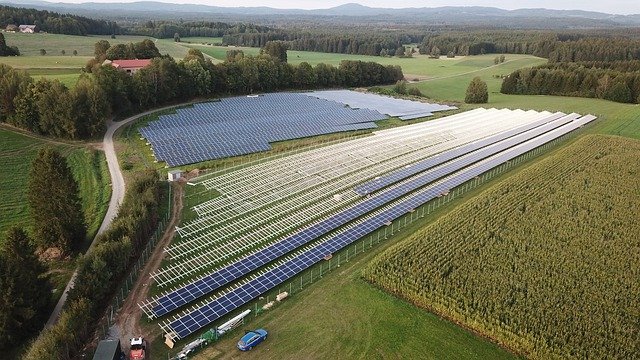

Energy sources like hydropower and solar power are both environmentally friendly alternatives to nonrenewable energy sources. The advantages and potential of each are distinct, but there are also some minor issues.
The method of transforming sunlight into electricity utilizing solar panels makes solar power so unique. On the other hand, hydropower is simply the power generated by the movement of water via turbines.
Hydropower
Hydro Solar, is one of the oldest energy sources that humanity has used for millennia. Wheat was ground into flour in ancient Greece using water wheels. The river’s kinetic energy turns the mill’s wheels, which creates mechanical energy. Today, hydropower technology is utilized to generate electricity from the movement of water, which is commonly referred to as hydroelectricity. The gravitational force of water falling from high elevations or potential water flow energy is two ways hydroelectricity is generated.
The following are the three primary components of a conventional hydroelectric power plant:
- Electricity is generated in an electric power plant.
- Controlling the water flow using a dam is one option.
- Energy extraction can be controlled using a reservoir.
The volume of water traveling through the system and the distance the water descends impact the amount of power that can be generated.
Hydropower has many advantages:
- It is a renewable source of energy that is replenished each year by snow and rain.
- With hydropower, the amount of energy produced can be adjusted to suit demand changes.
- With their ability to shut off and on almost immediately, hydroelectric generators are one of the most flexible energy sources, especially during times of high demand.
- There are no weather factors, air current movement, or complex start-up processes that need to be considered while using this technology.
- In addition, hydropower has a very low failure rate and a long lifecycle.
Hydropower’s disadvantages:
- Hydropower technology is heavily reliant on the availability of resources.
- Damming and managing water flow has several negative effects on the environment, including harm to river ecosystems, impediments to fish migration, and a small increase in carbon dioxide emissions during reservoir construction.
- A hydroelectric plant is expensive to develop in the beginning.
- During droughts, hydropower may not generate electricity because it relies on water availability.
- High-speed hydropower facilities require extensive water resource alteration to operate.
Solar Power
Solar energy has a significant role in today’s globe, as the world seeks to transition from a conventional source of energy to new sources. The Sun is a massive supply of this form of energy, and it will never run out. The energy can be converted from a DC to an AC using solar cells, such as photovoltaic cells and an inverter.
The usage of grid-connected solar PV modules is soaring as photovoltaic electricity costs continue to fall. A good, economical, and low-carbon technical invention, photovoltaic (PV) can use solar energy sustainably and effectively.
Benefits of Using Solar Energy:
In terms of environmental impact, solar power is the most environmentally friendly generation source; it creates no hazardous gas emissions or pollutants, and it poses no damage to wildlife.
- In distant areas with no electricity infrastructure, it can be harvested.
- It can be used nearly anyplace.
- Because it doesn’t require a lot of wiring or maintenance, it is a cost-effective alternative.
- In most cases, solar power plants are constructed on rooftops.
- It is unnecessary to check solar panels because their lifespan is very lengthy manually.
There are certain drawbacks to solar power:
- The high cost of solar system installation is the primary disadvantage of solar power.
- Dependent on the source of the light. Solar photovoltaic cells are bound by intermittency concerns due to the limited daylight hours.
- To avoid the high cost of using huge batteries, the generated energy must be used straight away.
- The output and efficiency vary from region to region depending on the environmental variables.
- Pollution is sometimes linked to the use of solar electricity. Greenhouse gas emissions have been primarily linked to the shipment and installation of solar systems.
All of these new forms of energy impact the environment be it positive or negative. Because each power source has its advantages and disadvantages, they must be used together to compensate for each other’s shortcomings. However, even though hydropower is a more dependable energy source, it cannot be used in as many places as solar electricity. To get the most out of an energy source, it must be tailored to the environment in which it will be used. Installation and maintenance requirements may be important considerations that must be considered throughout the design phase.





